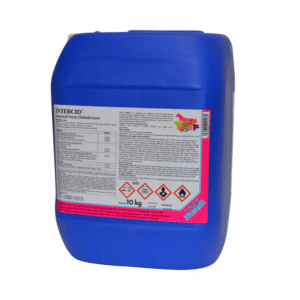Menu
Game Birds: Getting the foundations right with targeted cleaning

Now that the season’s over, it’s time to look ahead to the next – the groundwork for a successful 2024 season begins now.
Getting off to a good start with properly cleaned and disinfected rearing equipment should be at the top of the agenda. Often equipment including rearing sheds and runs would have been left outside all winter and are due a good clean before using again. Wild animals are likely to have utilised the shelter over the cold months and so now we must ensure any biosecurity hazards such as virus or cocci challenges are targeted and reduced.
At the core of any cleaning programmes should be the 3Ds protocol: Drench, Detergent and Disinfectant.
Steps 1 & 2:
DRENCH and DETERGENT
- Blast with water
- Apply detergent with a foaming lance at low pressure
- Leave for 30-60 minutes
- Increase the water pressure and wash off 5. Leave to dry and relocate.
Choosing a quality detergent is key as this will break down the fats and grease. A recommendation would be Alkaliene as it’s heavy duty and high foaming.
Step 3:
DISINFECT
It is important to select the right disinfectant and apply correctly. The key disinfectants we stock are the following:
Using the 3Ds protocol as a basis, the following approach’s can be used for different challenges: Coccidiosis Cleanout, Enhanced Cleanout and Emergency Cleanout.
The Programmes
- Coccidiosis Cleanout. Following coccidia challenged crop, 8 days clear and no other disease.
- Enhanced Cleanout. Following for example a poor result, maybe a high bacterial or rota-viral
challenge. - Emergency Cleanout. Following normal crop but due to issues, there is less than 7 days between a
batch leaving and the next batch arriving.
Coccidiosis Cleanout
- Remove bedding and clean water lines using Aqua-clean. The mixed solution should fill the pipes and be left for around 12 hours, followed by a flush with clean water to remove the biofilm and other material the Aqua-clean has removed. This should be done at least twice before chicks/poults arrive.
- Drench and detergent using Alkaliene
- Allow to dry thoroughly and apply Intercid to high surfaces
- Allow to dry, then apply Interkokask for low wall, posts, floors, drinkers and plastic feeders. Keep wet
for recommended time - Ensure drinker lines and cups are clean after bedding down
Enhanced Cleanout
- Remove bedding and clean water lines using Aquaclean. The mixed solution should fill the pipes and be left for around 12 hours, followed by a flush with clean water to remove the biofilm and other material the Aqua-clean has removed. This should be done at least twice before chicks/poults arrive.
- Drench and detergent using Alkaliene
- Allow to dry, then apply Intercid to all surfaces
- Allow to dry then apply Interkokask to all surfaces and ensure wet for correct time
- Thermal Fog with Halamid at 10% before bedding down
- Ensure drinker lines and cups are clean after bedding down
Emergency Cleanout
- Remove bedding and clean water lines using Aquaclean. The mixed solution should fill the pipes and be left for around 12 hours, followed by a flush with clean water to remove the biofilm and other material the Aqua-clean has removed. This should be done at least twice before chicks/poults arrive.
- Drench and detergent using Alkaliene
- Allow to dry, then apply Intercid to all surfaces
- Allow to dry then apply Interkokask to all surfaces and ensure wet for correct time including night
shelters - Thermal Fog with Halamid at 10% before bedding down
- Add Stalosan on top of the ground or on top of the plastic before Bedding is put in place
- Ensure drinker lines and cups are clean after bedding down
- Disperse Stalosan on top of the bedding around feeders and drinkers


